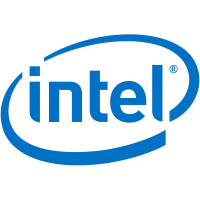Intel Celeron J3455E vs AMD Phenom X4 9350e
Comparative analysis of Intel Celeron J3455E and AMD Phenom X4 9350e processors for all known characteristics in the following categories: Essentials, Performance, Memory, Graphics, Graphics interfaces, Graphics API support, Compatibility, Peripherals, Security & Reliability, Advanced Technologies, Virtualization. Benchmark processor performance analysis: PassMark - Single thread mark, PassMark - CPU mark, Geekbench 4 - Single Core, Geekbench 4 - Multi-Core.
Differences
Reasons to consider the Intel Celeron J3455E
- Around 15% higher clock speed: 2.30 GHz vs 2 GHz
- A newer manufacturing process allows for a more powerful, yet cooler running processor: 14 nm vs 65 nm
- 6.5x lower typical power consumption: 10 Watt vs 65 Watt
- Around 7% better performance in PassMark - Single thread mark: 846 vs 793
- Around 41% better performance in PassMark - CPU mark: 2193 vs 1550
| Specifications (specs) | |
| Maximum frequency | 2.30 GHz vs 2 GHz |
| Manufacturing process technology | 14 nm vs 65 nm |
| Thermal Design Power (TDP) | 10 Watt vs 65 Watt |
| Benchmarks | |
| PassMark - Single thread mark | 846 vs 793 |
| PassMark - CPU mark | 2193 vs 1550 |
Reasons to consider the AMD Phenom X4 9350e
- 2.3x more L1 cache, more data can be stored in the L1 cache for quick access later
| L1 cache | 128 KB (per core) vs 224 KB |
Compare benchmarks
CPU 1: Intel Celeron J3455E
CPU 2: AMD Phenom X4 9350e
| PassMark - Single thread mark |
|
|
||||
| PassMark - CPU mark |
|
|
| Name | Intel Celeron J3455E | AMD Phenom X4 9350e |
|---|---|---|
| PassMark - Single thread mark | 846 | 793 |
| PassMark - CPU mark | 2193 | 1550 |
| Geekbench 4 - Single Core | 1201 | |
| Geekbench 4 - Multi-Core | 3281 |
Compare specifications (specs)
| Intel Celeron J3455E | AMD Phenom X4 9350e | |
|---|---|---|
Essentials |
||
| Architecture codename | Apollo Lake | Agena |
| Launch date | Q3'19 | July 2008 |
| Place in performance rating | 2338 | 2042 |
| Processor Number | J3455E | |
| Series | Intel Celeron Processor J Series | |
| Status | Launched | |
| Vertical segment | Desktop | Desktop |
Performance |
||
| 64 bit support | ||
| Base frequency | 1.50 GHz | |
| L1 cache | 224 KB | 128 KB (per core) |
| L2 cache | 2 MB | 512 KB (per core) |
| Manufacturing process technology | 14 nm | 65 nm |
| Maximum core temperature | 105°C | |
| Maximum frequency | 2.30 GHz | 2 GHz |
| Number of cores | 4 | 4 |
| Number of threads | 4 | |
| Die size | 285 mm | |
| L3 cache | 2048 KB (shared) | |
| Transistor count | 450 million | |
Memory |
||
| Max memory channels | 2 | |
| Maximum memory size | 8 GB | |
| Supported memory types | DDR3L/LPDDR3 up to 1866 MT/s; LPDDR4 up to 2400 MT/s | |
Graphics |
||
| Execution Units | 12 | |
| Graphics base frequency | 250 MHz | |
| Graphics max dynamic frequency | 750 MHz | |
| Intel® Clear Video HD technology | ||
| Intel® Clear Video technology | ||
| Intel® InTru™ 3D technology | ||
| Intel® Quick Sync Video | ||
| Max video memory | 8 GB | |
| Processor graphics | Intel HD Graphics 500 | |
Graphics interfaces |
||
| DisplayPort | ||
| eDP | ||
| HDMI | ||
| MIPI-DSI | ||
| Number of displays supported | 3 | |
Graphics API support |
||
| DirectX | Yes | |
| OpenGL | Yes | |
Compatibility |
||
| Max number of CPUs in a configuration | 1 | 1 |
| Package Size | 24mm x 31mm | |
| Thermal Design Power (TDP) | 10 Watt | 65 Watt |
| Sockets supported | AM2+ | |
Peripherals |
||
| Max number of PCIe lanes | 6 | |
| PCI Express revision | 2.0 | |
| PCIe configurations | 1x4 + 1x2 or 4x1 or 2x1+1x2 + 1x2 | |
Security & Reliability |
||
| Anti-Theft technology | ||
| Execute Disable Bit (EDB) | ||
| Intel® Identity Protection technology | ||
| Intel® Secure Key technology | ||
| Intel® Trusted Execution technology (TXT) | ||
Advanced Technologies |
||
| Enhanced Intel SpeedStep® technology | ||
| Idle States | ||
| Intel 64 | ||
| Intel® AES New Instructions | ||
| Intel® Hyper-Threading technology | ||
| Intel® Optane™ Memory Supported | ||
| Intel® Smart Response technology | ||
| Intel® Stable Image Platform Program (SIPP) | ||
| Intel® Turbo Boost technology | ||
| Thermal Monitoring | ||
Virtualization |
||
| Intel® Virtualization Technology (VT-x) | ||
| Intel® Virtualization Technology for Directed I/O (VT-d) | ||
| Intel® Virtualization Technology for Itanium (VT-i) | ||
| Intel® VT-x with Extended Page Tables (EPT) | ||
| AMD Virtualization (AMD-V™) | ||








